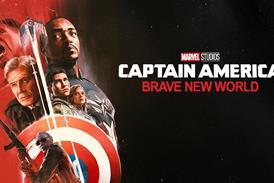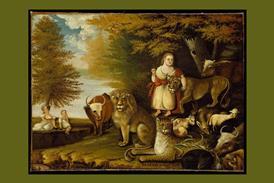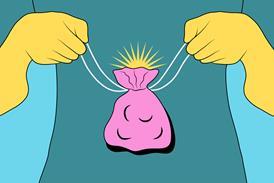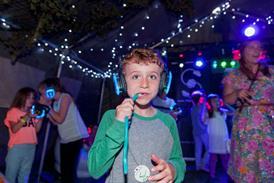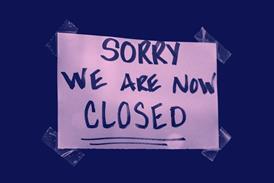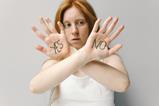At some point most children will ask whether or not the Bible is a made-up story. Becky Peacock gives 5 things Christian parents can be ready to say in response
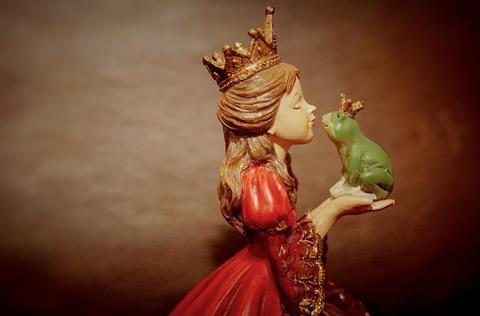
Kids love stories. Whether it’s Harry preparing for the battle of Hogwarts or Cinderella preparing for the ball, there is just something about a story that captures our attention, awakens our imaginations, and warms our hearts. I love how a book allows us to experience adventures, romance, comedy and fun, all through our imaginations. There are so many great books that our children can read - from the Narnia adventures to the fun of the 169 Storey Treehouse, you can fly off with Ruby the Red fairy or juggle middle school with Greg Heffley - so why should they read the Bible? And more to the point, how can we be sure that this book isn’t just full of fairy tales when everything else they read is?
Here’s 5 reasons to help your kids believe that the Bible is true:
1. The plot
If you were going to write a fairy tale that you wanted people to believe was real then it would be pretty risky to write predictions about the future (have you seen Back to the Future 3?) But that’s just what the Bible does! For example, in the Old Testament book of Daniel he gets some confusing dreams from God that predict the rise and fall of kings like Alexander the Great, the destruction of the powerful empire Babylon, and even the year when Jesus would start his ministry - and all with incredible accuracy!
We can be sure that the Bible is not a fairy tale for children’s bedtime stories but is true, accurate, and utterly reliable
I know what you’re thinking, he could have written it down after it happened. But scholars (including non-religious ones) have studied the language, archeology, and historical documents from the time and can assure readers that the book of Daniel was written before any of the events prophesied about actually happened. Fairy tales don’t do that.
2. The setting
Speaking of archeology, don’t fairy tales usually use made up places or change details of real places to make them more interesting? Well, many biblical sites have been discovered that confirm the descriptions and stories in the Bible are true. For example, in the 1960s and 70s the ruins of Sodom and Gomorrah were uncovered in the Jordan valley. Archeologist reports said that they were destroyed by a high temperature event, like a meteor, in around 1650 BC. Which is just what the Bible describes happening in Genesis 19!
More recently, the pool of Siloam was discovered in Jerusalem which is where Jesus apparently healed the blind man in John 9. The dig site found coins and architecture confirming it was used as a ritual purification site in the time of Jesus, and the layout, steps and pillars are just like the descriptions in John 9. If the Bible writers got the setting right, then what else did they get right.
3. The main character
There’s no question that the main character of the Bible is Jesus Christ. Therefore, the biggest question about whether the Bible could be a fake is whether he really existed and is what the Bible says about him true?
Ancient Christian and non-Christian documents all agree, Jesus Christ was born in Bethlehem between 7 and 2 BC, raised in Galilee, and died on a cross in Jerusalem by order of Pontius Pilate between 30 and 26 AD. In fact, there is better historical evidence for Christ than there is of Julias Caesar, Socrates, or Alexander the Great.
Jesus is one of the most documented figures in the ancient world, he is not a made-up character in a book, he was a real man doing remarkable things just as the Bible describes.
Read more:
Why ask you, when I can ask Google?
3 crucial questions Christian parents can help their youth and children think through
Why do Christians sing so much?
4. The author
If you were going to write a story, you’d plan out how the storyline will carry through the different chapters. You wouldn’t dish out one chapter for me to write, one for Naomi next door, one for Scott from Scouts, one for Sam from swimming… no! With lots of different authors comes lots of differences; they would contradict each other constantly. One would say your character has a sister while the other says a brother. One writes that she’s 8 while another writes that he’s 12. Different authors will mean lots of different details.
The Bible is written by around 40 different people, over a span of about 1,500 years. They’ve found over 5,000 ancient scrolls and manuscripts that can be accurately dated and compared against each other to prove they are real. No other ancient book even comes close to that many surviving texts. We can be sure that the words in the Bible now are the same words that were written originally. The very small number of differences between the manuscripts we do have only concern relatively unimportant details (for example, in 1 John 1:4 does John write he is writing so that ‘our’ or ‘your’ joy that will be complete? Manuscripts disagree but it doesn’t materially change Christian belief).
If there are so many authors to the Bible, and they couldn’t chat to each other to check details, and they didn’t update what it says later on, then how come the different books in the Bible don’t contradict each other? 2 Timothy 3:16 tells us that “all scripture is inspired by God”, which means that there is really one author to the whole Bible, God, and he inspired different people to write down different things at different times, and they all fit together perfectly because the same God authored them all.
5. The storyline
Have you ever thought, while reading the Bible, that it feels like it is talking directly to you? Like the things it is describing or saying could be about your life? The Bible is the only ancient book that is still as relevant to life today as it was when it was originally written. Which is pretty remarkable given how old it is! How would a fairy tale be able to do that?
If the Bible is a made-up fairy tale then you simply wouldn’t write heroes this flawed
A fairy tale has a beginning, a messy middle, and a nice happy ending. But so many of the stories in the Bible just don’t fit this pattern: We never find out what happens to Jonah in the end, the story just stops! Gideon’s story just gets worse and worse, no happy ending there. Jael never gets a beginning to her story before she wins a mighty victory for Israel single handedly. Even the story of Jesus is left shrouded in confusion with the disciples staring up into the sky wondering what’s happening. That just isn’t the neat and tidy ending that you would write if it was made up. David is a murderer, Elijah has depression, Jacob lies and tricks his way to success, and Rahab was probably a prostitute. If the Bible is a made-up fairy tale then you simply wouldn’t write heroes this flawed.
The Bible is a story of real people in real places, experiencing the highs and lows of life and faith, adventure and fun. Together they show through their stories the one bigger story of a God who loves them despite their brokenness, who came as a real baby in a real town. A God-man who actually lived, died, and rose again for real people like you and me. We can be sure that the Bible is not a fairy tale for children’s bedtime stories but is true, accurate, and utterly reliable. So, in that case the real question is, what are we going to do about it?


